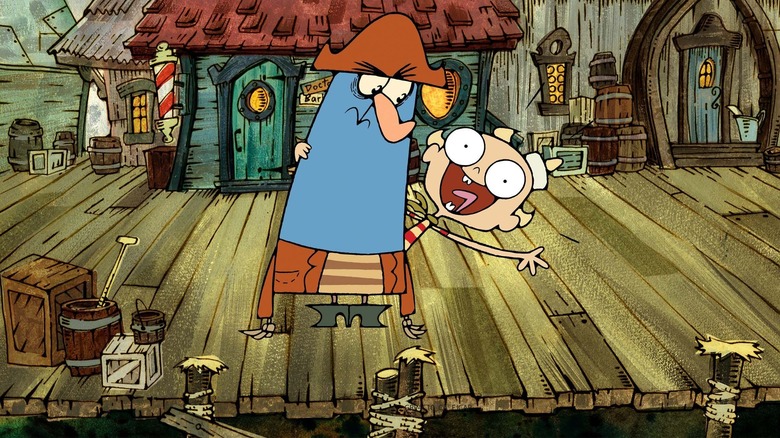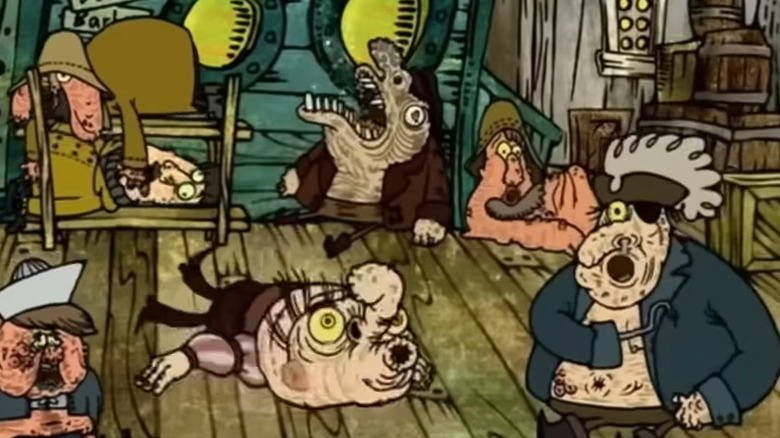How Flapjack Snuck Its Way Past A Cartoon Network Exec's No 'Weird' Rule
After Jim Samples, the Cartoon Network executive who oversaw the greenlighting of such successful cartoons as "Samurai Jack," "Ben 10," "Codename: Kids Next Door," and "The Grim Adventures of Billy & Mandy," left, a new regime at the popular animation-focused cable channel changed tactics. When Stuart Snyder took over in mid-2007, he had a brand new mandate for Cartoon Network — no weird stuff (like a parody of "God Emperor of Dune," probably).
Speaking with Buzzfeed, "The Marvelous Misadventures of Flapjack" creator Thurop Van Orman recalled Snyder saying, "'We don't want anything weird or anything where any mom would come out of the kitchen and say, 'What are you watching?'"
Now, this is not to say that Snyder failed at that command, or that his definition of the word "weird" is different than this writer's, but his tenure was filled with shows you could call "weird" and would make a mom say "What are you watching?"
"The Amazing World of Gumball," "Uncle Grandpa," "Regular Show," a TV show based on MAD magazine, "Adventure Time." These are all experimental shows with lots of bizarre imagery and humor. Sure, Snyder oversaw the creation of the uber-hit "Teen Titans Go!" but even that show is weird (remember that time Robin explained equity to kids?).
There's also "Flapjack," a show about a young boy whose best friend is a sea captain constantly drunk on maple syrup, with the two living in the mouth of a whale eating candy all the time. The show was greenlit right before Samples left, and episodes were already in development by the time Snyder ushered his mandate, including an early episode where Flapjack and Captain K'nuckles race a mechanical shark through the terrifying "Sea of Teeth." As Van Orman told Buzzfeed regarding Snyder's mandate, "It's a little late for that."
A history of animated weirdness
When Cartoon Network was launched in 1992, it quickly came to dominate the animation TV space as the successor to Hanna Barbera Studios. The channel has always been a place for experimentation, where new trends in American animation emerge, starting with the '90s run of Cartoon Cartoons that gave us "Johnny Bravo," "Dexter's Laboratory" (which is also the reason we got "The Powerpuff Girls") and "Cow and Chicken," the show that starred a naked devil.
It is a common belief amongst a certain demographic that Cartoon Network peaked in the early '00s, and by the time of "Flapjack," the channel had stopped being the paramount purveyor of cartoons. The criticism is that the days of experimentation were over, and that newer cartoons were not as grounded, complex, or adult as they were before. Of course, that's just wrong, and to think that is to simply show you haven't watched cartoons in the last 15 years. There is virtually no modern American cartoon that wasn't in some way influenced by, or at least shared a staff with "Adventure Time," which in turn shared a lot of crewmembers and ideas with "Flapjack." These two shows were just as groundbreaking and experimental as anything made in Cartoon Network before, and arguably weirder — despite Stuart's best efforts.

